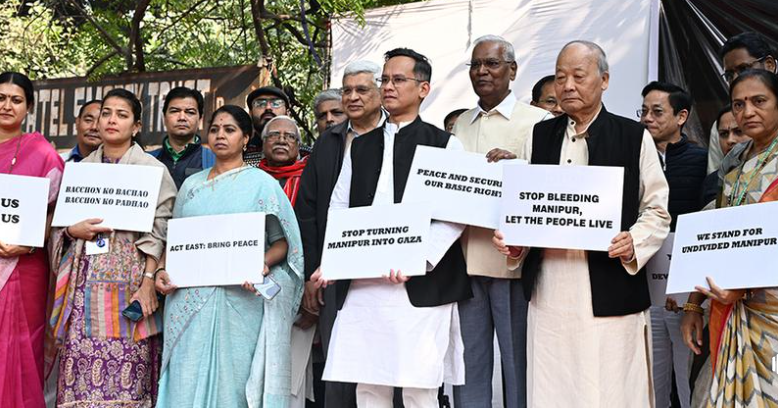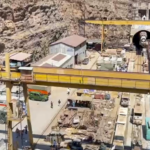Introduction
Manipur a crucial step toward addressing the aftermath of communal violence in Manipur, the Supreme Court of India has directed the state government to provide a detailed report on all properties burnt and looted during the unrest. The apex court’s directive comes amidst growing calls for accountability and transparency in addressing the damages suffered by individuals and communities. This order aims to bring clarity to the scale of destruction and pave the way for justice and rehabilitation of the affected.
This article delves into the Supreme Court’s directive, its implications for the state of Manipur, and the broader significance of accountability in conflict resolution.
Background: The Manipur Violence
The Triggering Event
Manipur, a northeastern state of India, has witnessed periodic outbreaks of ethnic and communal violence. The recent unrest was sparked by long-standing grievances over land rights, political representation, and ethnic identity, leading to widespread violence, arson, and displacement of thousands.  For the more information click on this link
For the more information click on this link
Impact of the Violence
- Human Toll: Dozens of lives were lost, and many were injured.
- Displacement: Thousands were forced to flee their homes, seeking refuge in relief camps.
- Property Damage: Homes, businesses, and places of worship were looted and set ablaze, leaving a trail of destruction.
Call for Accountability
Victims and civil society organizations have been demanding a comprehensive assessment of damages to ensure justice and adequate compensation. The Supreme Court’s directive reflects the judiciary’s commitment to addressing these demands.
The Supreme Court’s Directive
Key Aspects of the Order
- Detailed Report on Damages
The court has instructed the Manipur government to compile a comprehensive inventory of all properties that were burnt, looted, or otherwise damaged during the violence. - Identification of Affected Individuals
The report must include information about the owners or occupants of the affected properties to facilitate rehabilitation and compensation efforts. - Timeline for Submission
The state government has been asked to expedite the process and submit the report within a specified timeframe. - Future Monitoring
The Supreme Court also hinted at appointing independent observers or committees to ensure the authenticity and completeness of the report.
Challenges in Implementing the Directive
Scale of Destruction
The widespread nature of the violence poses logistical challenges in documenting all affected properties accurately.
Data Collection and Verification
Ensuring that the data collected is accurate and free from manipulation will require robust mechanisms and independent oversight.
Cooperation from Stakeholders
The state government will need the cooperation of victims, local communities, and law enforcement agencies to compile the report.
Political and Ethnic Sensitivities
Given the ethnic dimensions of the violence, the process of documentation must be sensitive to the concerns of all communities to avoid exacerbating tensions.
Legal and Constitutional Significance
Right to Justice
The Supreme Court’s directive underscores the fundamental right of victims to seek justice and reparation for losses incurred during violence.
State Accountability
By holding the state government accountable, the judiciary reinforces the principle of good governance and the rule of law.
Setting a Precedent
The directive could serve as a benchmark for addressing similar incidents of violence in other parts of the country, ensuring a uniform approach to justice and rehabilitation.
Rehabilitation and Compensation
Comprehensive Relief Package
The data collected through the Supreme Court’s directive could form the basis for a robust relief package, including:
- Monetary compensation for damaged properties.
- Reconstruction of homes and businesses.
- Support for livelihood restoration.
Psychological Support
In addition to material losses, victims often suffer psychological trauma. The government must integrate counseling and mental health services into the rehabilitation process.
Community Rebuilding
Efforts should focus on fostering reconciliation and rebuilding trust among communities to prevent future conflicts.
Broader Implications of the Directive
For Manipur
The directive is an opportunity for the Manipur government to demonstrate its commitment to justice and good governance. Transparency in addressing the damages will be crucial in restoring public trust.
For India
The Supreme Court’s proactive stance sends a strong message about the importance of accountability in a democratic society. It also underscores the judiciary’s role as a guardian of fundamental rights.
For Victims
The directive offers a glimmer of hope for victims who have been demanding recognition of their losses and assurances of justice.
Voices from the Ground
Victims’ Perspective
Many victims have expressed relief at the Supreme Court’s intervention. “We lost everything—our home, our business. This directive gives us hope that our suffering will not be ignored,” said a resident whose property was burnt during the violence.
Civil Society
Human rights organizations have welcomed the order, emphasizing the need for transparency and accountability in addressing the aftermath of violence.
Political Reactions
Political leaders have offered mixed reactions, with opposition parties urging swift action and ruling party members pledging compliance with the directive.
Path Forward
Efficient Documentation
The state government must deploy trained personnel and leverage technology to document damages accurately and efficiently.
Independent Oversight
Involving neutral observers, such as retired judges or members of civil society, could enhance the credibility of the process.  For the more information click on this link
For the more information click on this link
Long-Term Reconciliation
In addition to immediate relief measures, the government must focus on fostering long-term reconciliation through community engagement and development initiatives.
Conclusion
The Supreme Court’s directive to the Manipur government marks a critical step toward addressing the aftermath of communal violence. By mandating a comprehensive report on properties burnt and looted, the judiciary has reinforced the principles of justice, accountability, and good governance.
For the victims, the directive is a ray of hope, signaling that their losses will not go unnoticed. For the state, it is an opportunity to demonstrate commitment to constitutional values and rebuild public trust. As Manipur embarks on the challenging task of documenting and addressing the damages, the path forward must be guided by transparency, inclusivity, and a firm resolve to uphold justice for all. ALSO READ:-West Bengal Supreme Court Declares: Reservation Must Not Be Based on Religion in 2024




